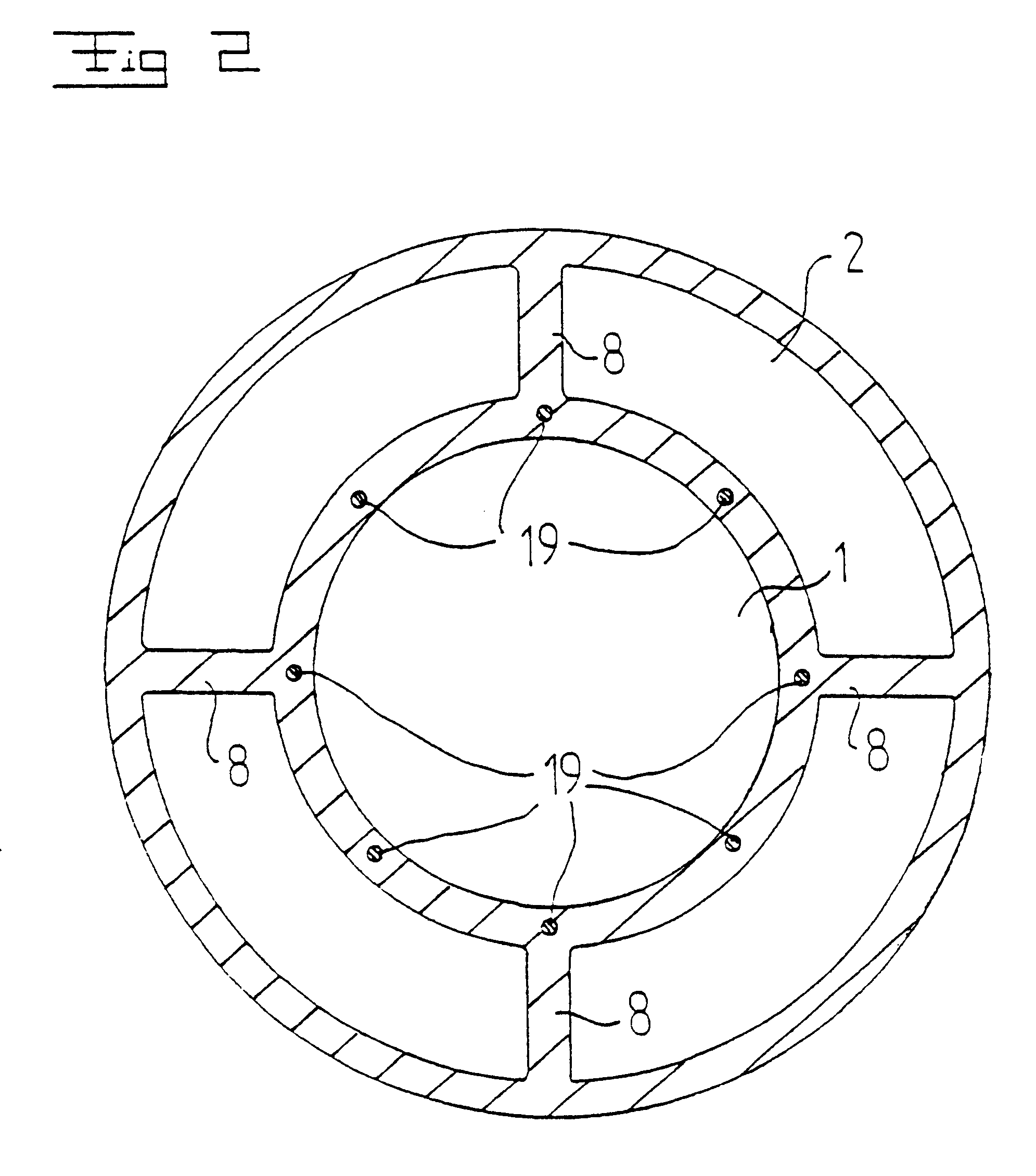Device for supplying inhalation gas to and removing exhalation gas from a patient
a technology for inhalation gas and patient, which is applied in the field of inhalation gas supply devices for inhalation gas supply and exhalation gas removal of patients, which can solve the problems of patient suffering significant stress, discomfort, and a sense of suffocation, and the ability of the tracheal tube used today to remove the secretion,
- Summary
- Abstract
- Description
- Claims
- Application Information
AI Technical Summary
Benefits of technology
Problems solved by technology
Method used
Image
Examples
Embodiment Construction
FIG. 1 discloses a device for the supply of inhalation gas to and the removal of exhalation gas from a patient. The device includes a pipe member 1 which is intended to be introduced into the trachea of a patient. The pipe member 1 includes a forward portion 1', which forms a so called endotracheal tube and which is intended to be located in the trachea and the throat of the patient, and a rearward portion 1", which may be connected to the forward portion 1' via a connecting member or be manufactured in one piece together with the forward portion 1'. In the embodiment disclosed, the rearward portion 1" is manufactured in a more flexible material than the forward portion 1'.
The pipe member 1 includes a first pipe conduit 2, which forms a first channel and is intended to transport said inhalation gas to the patient and which has a distal outlet opening 3 for the inhalation gas. Furthermore, the pipe member 1 includes a second pipe conduit 4, which forms a second channel and is arrange...
PUM
 Login to View More
Login to View More Abstract
Description
Claims
Application Information
 Login to View More
Login to View More - R&D
- Intellectual Property
- Life Sciences
- Materials
- Tech Scout
- Unparalleled Data Quality
- Higher Quality Content
- 60% Fewer Hallucinations
Browse by: Latest US Patents, China's latest patents, Technical Efficacy Thesaurus, Application Domain, Technology Topic, Popular Technical Reports.
© 2025 PatSnap. All rights reserved.Legal|Privacy policy|Modern Slavery Act Transparency Statement|Sitemap|About US| Contact US: help@patsnap.com



